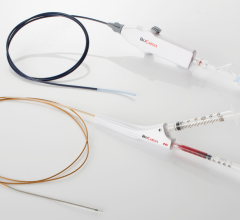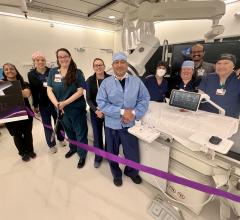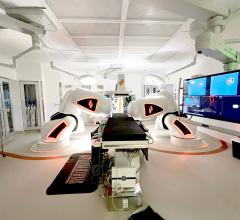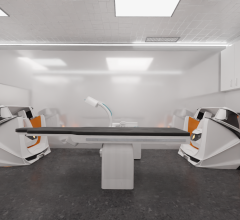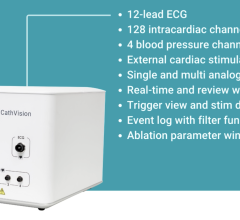
The FDA said the Medtronic Micra leadless pacemaker may have a higher rate of serious complications due to cardiac perforations during implant and is trying to get more information on these types of incidents.
November 18, 2021 — The U.S. Food and Drug Administration (FDA) is reminding providers about the risk of major complications if cardiac perforation occurs during leadless pacemaker implantation. Cardiac perforation is a rare complication of any pacemaker system implant that can lead to major complications or even death.
The FDA said overall risk of cardiac perforation associated with leadless pacemaker implantation appears similar to the risk associated with traditional transvenous pacing systems. However, the FDA said the Medtronic Micra leadless pacemaker premarket clinical studies suggested major complications related to cardiac perforation appeared to be more severe for patients who received a leadless pacing system compared to patients who received a transvenous pacemaker.
Information from real-world use of the Micra suggests that cardiac perforations associated with Micra leadless pacemakers are more likely to be associated with serious complications, such as cardiac tamponade or death, than with traditional pacemakers.
The FDA is working with the manufacturer to evaluate outcomes after cardiac perforation following implantation of leadless pacemaker systems to identify potential contributing factors and mitigation measures, and to ensure the product labeling adequately addresses the issue. The FDA will continue to monitor reports of adverse events and other sources of postmarket data associated with leadless pacemaker systems and will update the public if new or additional information becomes available.
The FDA is bringing this information to the attention of healthcare providers as a reminder to report leadless pacemaker cardiac perforations and complications to the manufacturer and the FDA. The agency is trying to understand if there are more complications than what have been reported. The FDA said prompt reporting of adverse events can help the agency and the manufacturer identify and better understand the risks associated with the medical devices. The FDA is working with the manufacturer to evaluate information from all available sources, including postmarket studies and real-world data, to provide additional information on this issue.
FDA recommends that healthcare providers:
• Discuss the risks and benefits of available pacemaker system options with patients as part of shared clinical decision-making.
The benefit-risk profile of leadless pacing systems compared to transvenous systems or alternative treatment options should be considered for each patient.
• Be aware that although cardiac perforation is a rare complication following pacemaker system implant procedures, the risk of major complications following cardiac perforation may be higher in patients who receive leadless pacing systems vs. traditional transvenous pacemakers.
• Implanting physicians should be prepared to emergently manage patients experiencing perforation during leadless pacemaker implantation. In some cases, urgent cardiac surgical intervention may be necessary.
• Read and carefully follow the Instructions for Use (IFU) and training for the Medtronic leadless Micra Transcatheter Pacing System, which include recommendations about implant location at the right ventricle septum, delivery system steering, repositioning the device, patient selection to minimize perforation risk, stand-by availability of cardiothoracic surgery, and immediate access to echocardiography equipment.
• Report any adverse events or suspected adverse events experienced with the Micra Transcatheter Pacing System or other pacemaker systems. Voluntary reports can be submitted through MedWatch, the FDA Safety Information and Adverse Event Reporting program. Device manufacturers and user facilities must comply with the applicable Medical Device Reporting (MDR) regulations. Health care personnel employed by facilities that are subject to FDA's user facility reporting requirements should follow the reporting procedures established by their facilities.
Background
The Medtronic Micra Transcatheter Pacing System was approved by the FDA in April 2016 with a mandated post-approval study to obtain more information and help assess the continued safety and effectiveness of the device. This pacemaker system does not require wired leads to provide an electrical connection between the pulse-generating device and the heart. The Medtronic Micra is currently the only approved and marketed leadless pacemaker in the U.S.
Pacemakers are surgically implanted medical devices that generate electrical impulses to treat slow pulse rates, and nearly 1 million people worldwide are implanted with pacemakers each year. The lead in a traditional single chamber pacemaker extends from the pacemaker generator, which is implanted under the skin near the collarbone, through a vein, and terminates in direct contact with the heart’s right ventricular wall. The lead delivers electric pulses from the generator to the right ventricle and helps coordinate heartbeat timing. While the Micra system and other leadless pacemakers work similarly to pacemakers with leads to regulate heart rate, the self-contained, inch-long leadless device is implanted directly in the right ventricle chamber of the heart.
Cardiac perforation is a rare complication of any pacemaker system implant, occurring in approximately 1% of cases. Perforation typically happens during implantation, but complications from a perforation can occur days, weeks, and even months after the implantation procedure. Cardiac perforation can cause serious complications, including pericardial effusion (accumulation of fluid around the heart) requiring drainage with a catheter inserted through the skin (percutaneous drainage) or open surgical repair, pacemaker system revision, or death. Pericardial drainage can be an emergency life-saving intervention in the event of a perforation.
Premarket studies reported major complication rates related to perforation during implantation of Micra leadless pacemakers were higher than in historically referenced studies. Postmarket data supports these observations, that complication rates may be higher, and events may be more severe (for example, resulting in surgical repairs) for patients with leadless pacemakers. Since 2016, the FDA has received over 300 medical device reports (MDRs) for the Micra leadless pacemaker which describe a perforation, and over 90 of these described a perforation resulting in death.
The FDA recognizes the limitations of MDR data, and reports submitted to the FDA are just one source the FDA uses to monitor and evaluate the safety and effectiveness of medical devices, in addition to mandated postmarket studies, published literature, and real-world data from registries and claims databases. The FDA said it will continue to review data from the ongoing post-approval study and other available data sources as they become available.
Following the instructions provided in the manufacturer’s product manual and user training can reduce the risk of cardiac injury, especially considerations for delivery system steering, repositioning the device, and patient selection. Implanting physicians should be prepared to emergently manage cardiac perforation during leadless pacemaker implantation. In some cases, urgent cardiac surgical intervention may be necessary. The FDA will continue to work with the manufacturer to ensure that healthcare providers are aware of the risk of major complications if cardiac perforation occurs during leadless pacemaker implantation.
Reporting Problems With the Micra to the FDA
The FDA encourages health care providers to report any adverse events or suspected adverse events experienced with the Micra Transcatheter Pacing System or other pacemaker systems.
• Voluntary reports can be submitted through MedWatch, the FDA Safety Information and Adverse Event Reporting program.
• Device manufacturers and user facilities must comply with the applicable Medical Device Reporting (MDR) regulations.
• Healthcare personnel employed by facilities that are subject to the FDA’s user facility reporting requirements should follow the reporting procedures established by their facilities.
Prompt reporting of adverse events can help the FDA identify and better understand the risks associated with medical devices.

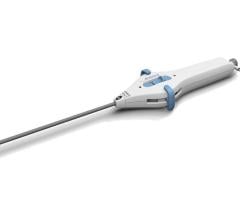
 July 31, 2024
July 31, 2024 
